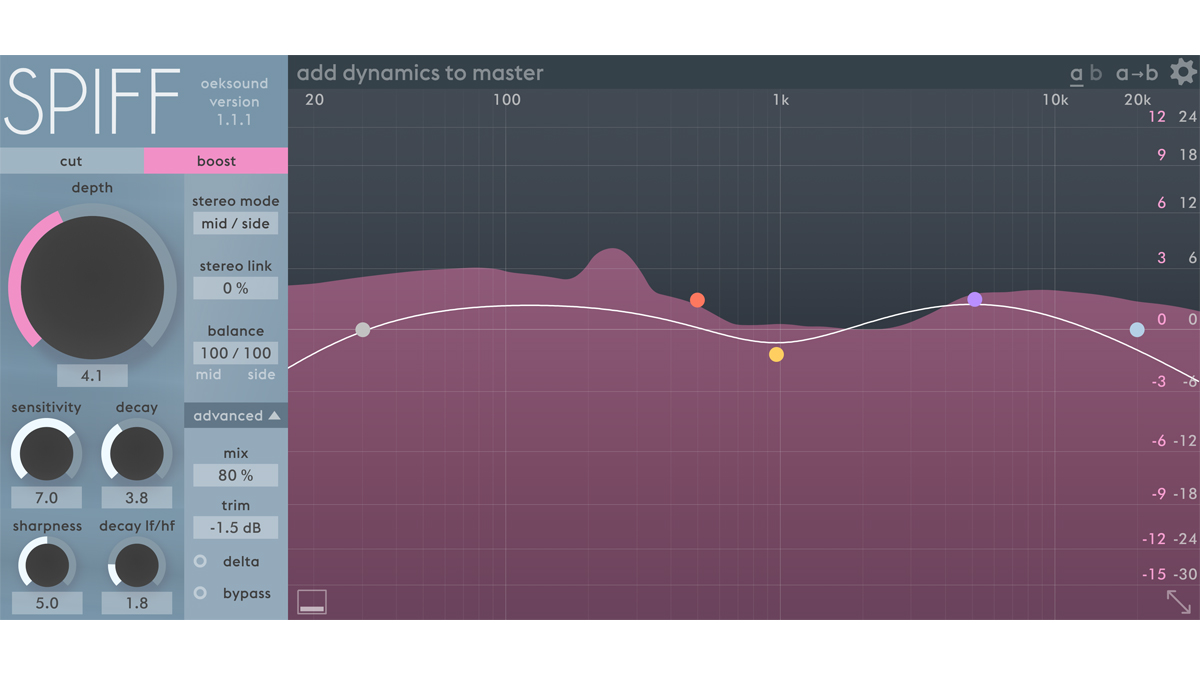Oeksound’s spiff might make you think about transient control in a whole new way
Find out how it can help you to get more out of your other plugins

oeksound made its name with soothe, its “dynamic resonance suppressor,” but it also has another plugin, spiff, which offers transient control.
This isn’t your common or garden transient designer/shaper, though, and once you know what it can do, you’ll realise that it could play a vital part in your signal chain.
Like soothe, spiff works by analysing the signal and reacting only to specific frequency areas - in this case, those that contain the transient information. So, rather than having a blunt instrument that just raises or decreases the level of the whole signal, you have something far more flexible.
In fact, what this means is that you can then go on to apply other plugin effects to just the transient part of a sound, be it saturation, delay or clipping. You can also reduce or even completely remove the attack of the sound, before adding further processing such as reverb, distortion or a compressor.
So, as well as enabling you to perform what you might call ‘standard’ transient shaping tasks - enhancing the attack of drums, removing mouth noises from compressed vocals, boosting the pick attack of a rhythm guitar part or dialling down the ‘clickiness’ of plucky synth basses, for example - spiff can also be used more creatively.
Possible advanced applications include removing the transients from a recorded drum loop to get only the ‘room sound’ - this could then be distorted and mixed back in with the dry signal - and cutting or boosting transients to shape the sound of your reverb.
You might also try applying delay to just the delta signal on spiff to create a rhythmical, textured sound, or you could create a subtle widening effect by cutting transients before spreading the signal with chorus/microshift.
Another option is to boost the transients before clipping them - with another plugin such as StandardClip, for example - which means you’ll get more out of the limiters you’re using. For example, a boost around the 600-1200hz mark can help to add presence to rhythmical bass sounds.
Whatever you’re doing, the key thing to remember is that you use minimal phase when boosting, and linear when cutting. Adjust the window according to the transient length you want to process.
If you’re worried that all of this sounds complicated, don’t be - spiff has a carefully-designed user interface that means that, whether you want to use it for quick tasks or in more detail, you won’t be left scratching your head. In fact, in a lot of cases you’ll probably find that it’ll do what you need it to with minimal tweaking.
For more, and to try a demo, head for the oeksound website.
Get the MusicRadar Newsletter
Want all the hottest music and gear news, reviews, deals, features and more, direct to your inbox? Sign up here.